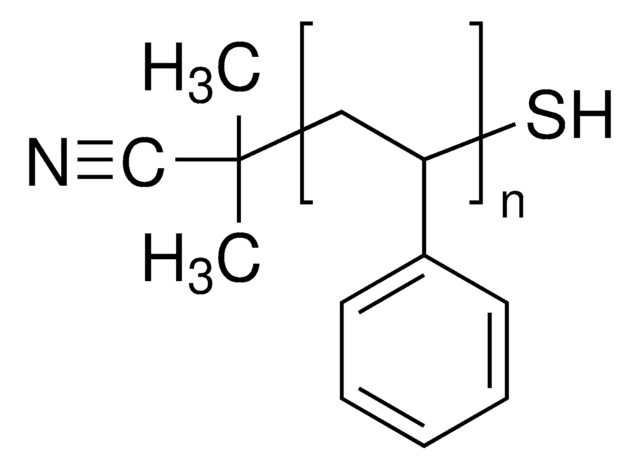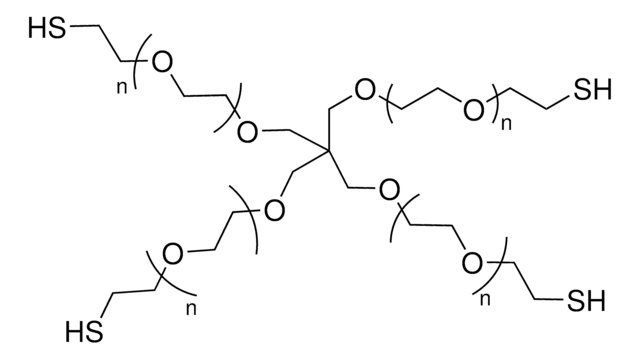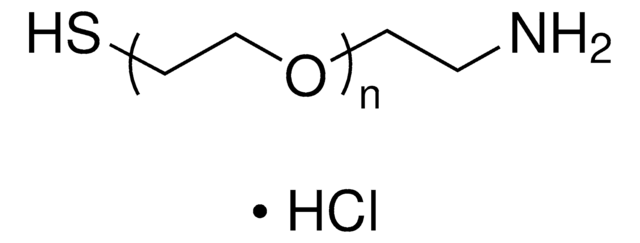729159
Poly(ethylene glycol) methyl ether thiol
average MN 6,000, chemical modification reagent thiol reactive, methoxy, thiol
Sinónimos:
Polyethylene glycol, Methoxy PEG thiol, Methoxypolyethylene glycol thiol, PEG thiol, mPEG thiol
About This Item
Productos recomendados
product name
Poly(ethylene glycol) methyl ether thiol, average Mn 6,000
form
solid
Quality Level
mol wt
average Mn 6,000
reaction suitability
reagent type: chemical modification reagent
reactivity: thiol reactive
mp
56-61 °C
Mw/Mn
≤1.2
Ω-end
thiol
α-end
methoxy
polymer architecture
shape: linear
functionality: monofunctional
shipped in
dry ice
storage temp.
−20°C
¿Está buscando productos similares? Visita Guía de comparación de productos
General description
Application
signalword
Warning
hcodes
Hazard Classifications
Eye Irrit. 2 - Skin Irrit. 2 - STOT SE 3
target_organs
Respiratory system
Storage Class
11 - Combustible Solids
wgk_germany
WGK 3
flash_point_f
Not applicable
flash_point_c
Not applicable
Elija entre una de las versiones más recientes:
¿Ya tiene este producto?
Encuentre la documentación para los productos que ha comprado recientemente en la Biblioteca de documentos.
Los clientes también vieron
Artículos
Progress in biotechnology fields such as tissue engineering and drug delivery is accompanied by an increasing demand for diverse functional biomaterials. One class of biomaterials that has been the subject of intense research interest is hydrogels, because they closely mimic the natural environment of cells, both chemically and physically and therefore can be used as support to grow cells. This article specifically discusses poly(ethylene glycol) (PEG) hydrogels, which are good for biological applications because they do not generally elicit an immune response. PEGs offer a readily available, easy to modify polymer for widespread use in hydrogel fabrication, including 2D and 3D scaffold for tissue culture. The degradable linkages also enable a variety of applications for release of therapeutic agents.
Nuestro equipo de científicos tiene experiencia en todas las áreas de investigación: Ciencias de la vida, Ciencia de los materiales, Síntesis química, Cromatografía, Analítica y muchas otras.
Póngase en contacto con el Servicio técnico















